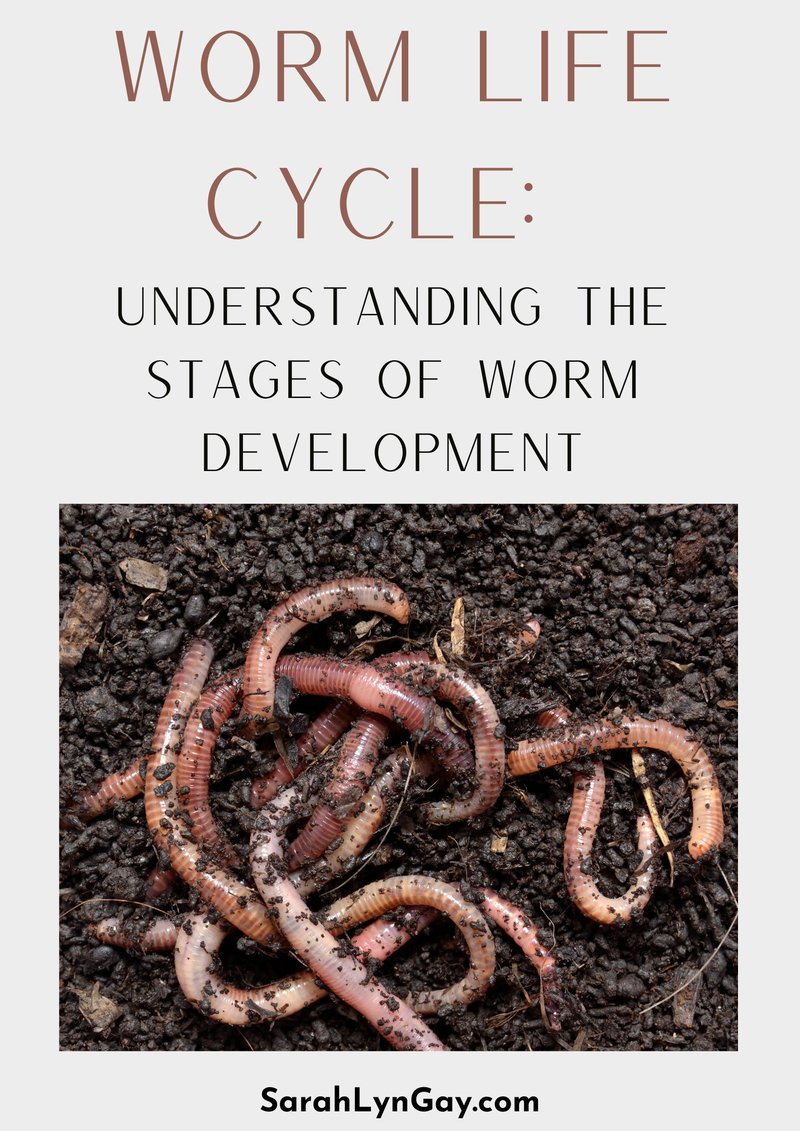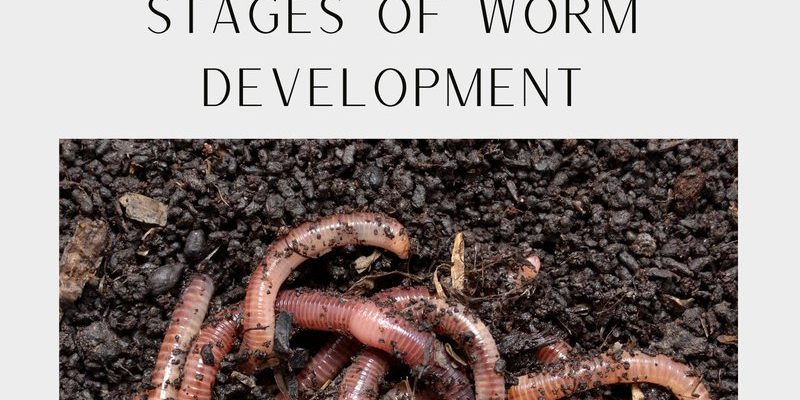
To put it simply, the Grindal worm is a type of nematode, often found in moist soil or decaying organic matter. They thrive in environments rich in organic material, making them perfect for aquarists who want to provide fresh food for their fish. You might think of them as the snack you’d find at a party—small, plentiful, and full of nutrients that your fish will love!
What Are Grindal Worms?
Before we jump into their life cycle, let’s get to know these tiny creatures a bit better. Grindal worms are *segmented worms* that prefer to live in moist environments. They’re often around 2-5 centimeters in length and look quite similar to earthworms but are much smaller and thinner.
Grindal worms offer protein-rich nutrition, making them a fantastic choice for fish, particularly fry (baby fish) that need extra sustenance to thrive. They reproduce quickly, so once you get a culture going, you’ll have a steady supply for your aquatic pets.
You might wonder why they’re a popular choice over other live foods. Well, they are easier to culture than certain other options, and their small size makes them suitable for feeding both small and large fish. They also have a soft body, making them easy for fish to munch on.
The Life Cycle of Grindal Worms
The life cycle of Grindal worms consists of several distinct stages, which is quite fascinating. They go through a process known as *metamorphosis*, but it’s not as dramatic as it sounds. Here’s how it unfolds:
1. Egg Stage: Everything starts with the eggs. Female Grindal worms lay eggs in moist organic matter. Each female can produce hundreds of eggs at a time, ensuring that even if some don’t survive, there will still be plenty of new worms.
2. Larval Stage: Once the eggs hatch, out come the larvae—tiny and nearly transparent. They are not yet fully developed, but they are hungry! They start feeding on the surrounding organic material, growing quickly.
3. Juvenile Stage: After a few molts, these larvae become juveniles. They start to look more like adult worms, and their growth accelerates. At this stage, they begin to explore their environment, which offers them more nutrients.
4. Adult Stage: Finally, they reach adulthood. Adult Grindal worms are capable of reproducing, restarting the life cycle. It’s impressive to think how quickly this process can take place, often with a new generation appearing within a few weeks.
The entire life cycle can be completed in as little as three to four weeks under optimal conditions!
Stages of Development
In more detail, let’s break down each stage of the Grindal worm’s development. If you plan to breed them, understanding these stages can be crucial for setting up an appropriate environment.
Egg Stage
During the egg stage, the eggs are small and often embedded in small clumps in their environment. They require a humid atmosphere to hatch. If the moisture level drops too low, the eggs can dry out and perish.
Larval Stage
When they hatch, the larvae begin feeding almost immediately. They consume microbes and organic matter around them. This feeding frenzy is crucial; the more they eat, the faster they grow. In these early days, they are extremely vulnerable, so a stable environment is important.
Juvenile Stage
In the juvenile stage, the worms start to look like mini adults. As they continue to eat, they undergo a series of molts, shedding their skin as they grow. Each molt signifies a new developmental stage, bringing them closer to adulthood.
Adult Stage
Once they reach adulthood, Grindal worms can begin reproducing within just a few days. They can live for several months, continuing to lay eggs and maintaining the cycle. The more adults you have, the more eggs will be produced, leading to a robust culture of worms.
Behavioral Traits
Beyond their life cycle, Grindal worms exhibit some interesting behaviors. Their main goal in life is quite simple: survive and reproduce. But how they go about this can be quite fascinating.
Feeding Habits
Grindal worms are detritivores, meaning they feed on decaying organic material. They thrive in moist environments rich in nutrients. You’ll often find them wriggling through the substrate, consuming all the little bits of food around them.
If you’re culturing them, you’ll want to provide a constant supply of organic matter like oatmeal or leaf litter. This keeps their energy up and ensures they reproduce efficiently.
Movement and Interaction
They don’t just sit around; Grindal worms are quite active! They wiggle and often move in groups, perhaps for safety in numbers. This activity helps them find food and avoid potential predators, including fish if they’re in the same environment.
Environmental Preferences
Grindal worms prefer warm, moist conditions. They thrive at temperatures between 20-25°C (68-77°F) and like a pH level between 6 and 7. Keeping them in these conditions can speed up their growth and reproduction rates—making it easier for you to maintain a steady food supply.
How to Culture Grindal Worms
If you’re sold on the idea of breeding Grindal worms, let’s cover the basics of starting your own culture. Here’s how you can do it:
Setting Up Your Culture
1. Container: Use a shallow container or tray. The depth doesn’t need to be more than a few inches, as these worms don’t burrow very deep.
2. Substrate: Add a layer of moist substrate—a mix of oatmeal, mashed potatoes, or even peat moss works well.
3. Moisture: Keep everything damp but not soaking wet. Too much water will drown them, while too little will dry out the eggs.
4. Temperature: Aim for a warm spot, ideally around 20-25°C (68-77°F). A consistent temperature promotes faster growth.
Feeding Them
Feed your Grindal worms every few days, using fine organic matter like oatmeal. Just sprinkle it on the surface. They’ll find it, and too much food can lead to mold, so be cautious.
Harvesting
When you’re ready to feed your fish, gently scoop out the worms from the surface. Using a net or a fine mesh strainer can help you collect them without disturbing the whole culture too much.
Common Challenges and Solutions
Culturing Grindal worms is usually straightforward, but you may run into a few hiccups. Here are some common issues and how to tackle them.
Mold Growth
If you notice mold forming in your culture, it’s usually a sign you’re overfeeding them. Cut back on the food and ensure your container has good air circulation. Sometimes, just removing the mold and replacing the substrate can do the trick.
Low Reproductive Rate
If your Grindal worms aren’t reproducing as expected, check the moisture levels and temperature. They thrive in warm, humid conditions, so making slight adjustments can often spark a burst of growth.
Contamination
If your culture gets contaminated with other pests, it might be time to start fresh. Clean your container thoroughly and set up a new culture. It can be disheartening, but sometimes a fresh start is the best way forward.
Understanding the life cycle of the Grindal worm isn’t just for science enthusiasts; it’s practical knowledge, especially if you keep fish or want to start a breeding project. By knowing their stages and behaviors, you can create the perfect environment for them to thrive.
From their humble beginnings as eggs to their wriggling presence in your fish tank, Grindal worms are more than just tiny snacks—they’re a vital part of the ecosystem for your fish. So whether you’re a seasoned aquarist or just starting out, keeping the Grindal worm in mind can provide nutrition and excitement for your aquatic experience. Happy fish feeding!

